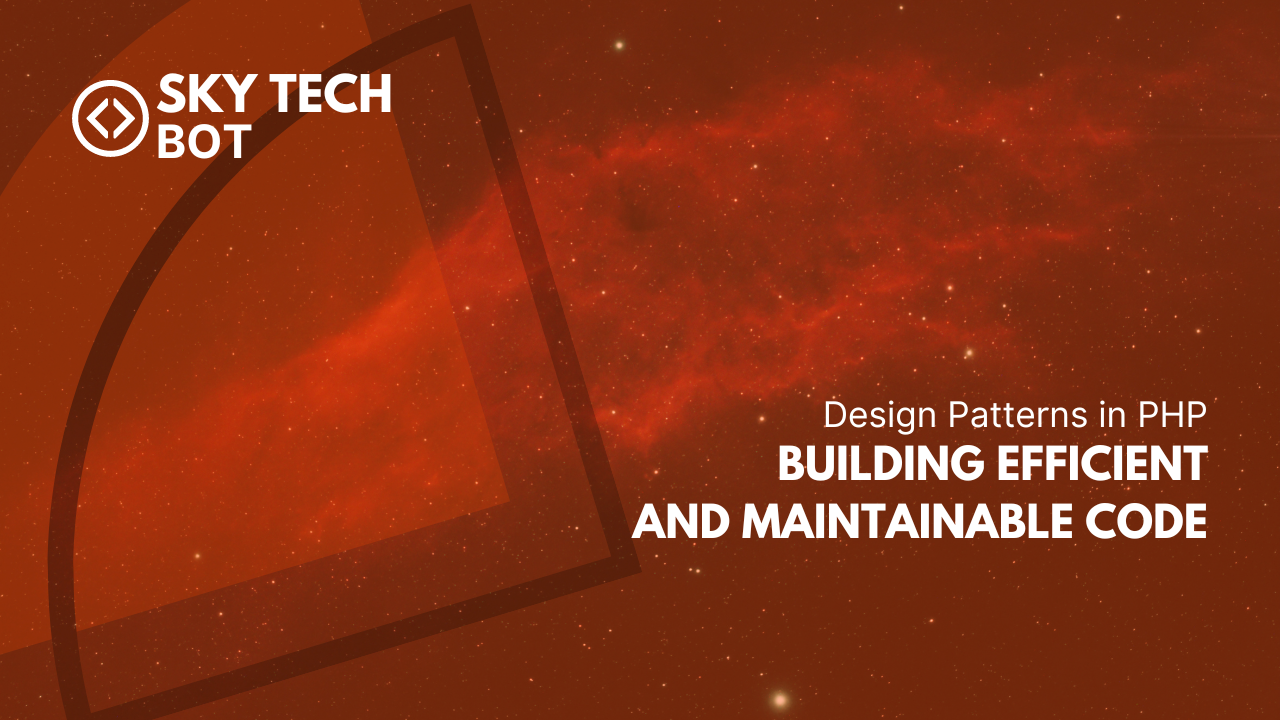Design patterns are proven solutions to common software design challenges, promoting code re-usability, flexibility, and maintainability. In PHP development, applying design patterns can significantly enhance the quality and structure of your code base. In this blog, we’ll explore some of the mostly used design patterns in PHP, along with practical examples to demonstrate their implementation and benefits.
1. Factory Method Pattern:
The Factory Method pattern provides an interface for creating objects without specifying the exact class of the object to be created. This pattern is useful when you want to decouple the object creation process from the client code.
Example: Let’s create an interface for the factory and two concrete classes that implement the interface.
interface PaymentGateway
{
public function pay($amount);
}
class PayPalGateway implements PaymentGateway
{
public function pay($amount)
{
// Implement PayPal payment logic
}
}
class StripeGateway implements PaymentGateway
{
public function pay($amount)
{
// Implement Stripe payment logic
}
}
$gateway = new PayPalGateway();
$gateway->pay(100);
2. Singleton Pattern:
The Singleton pattern ensures that a class has only one instance and provides a global access point to that instance. It is useful when you need to restrict the instantiation of a class to a single object.
Example: Let’s create a Singleton class that allows only one instance to be created.
class Logger
{
private static $instance;
private function __construct()
{
// Prevent direct instantiation
}
public static function getInstance()
{
if (self::$instance === null) {
self::$instance = new Logger();
}
return self::$instance;
}
public function log($message)
{
// Implement logging logic
}
}
$logger = Logger::getInstance();
$logger->log('Logging a message');
3. Observer Pattern:
The Observer pattern establishes a one-to-many dependency between objects. When one object changes state, its dependents (observers) are notified automatically.
Example: Let’s create an example of the Observer pattern for a simple notification system.
interface Observer
{
public function update($data);
}
class User implements Observer
{
public function update($data)
{
echo "User received notification: {$data}\n";
}
}
class Admin implements Observer
{
public function update($data)
{
echo "Admin received notification: {$data}\n";
}
}
class NotificationSystem
{
private $observers = [];
public function addObserver(Observer $observer)
{
$this->observers[] = $observer;
}
public function notifyObservers($data)
{
foreach ($this->observers as $observer) {
$observer->update($data);
}
}
}
$notificationSystem = new NotificationSystem();
$user = new User();
$admin = new Admin();
$notificationSystem->addObserver($user);
$notificationSystem->addObserver($admin);
$notificationSystem->notifyObservers('New product released');
Conclusion:
Design patterns in PHP provide practical and proven solutions to common software design challenges. By applying these patterns, you can create code that is more maintainable, flexible, and scalable. Understanding and using design patterns appropriately can significantly improve the quality and structure of your PHP applications, making them easier to maintain and extend. Happy coding!

